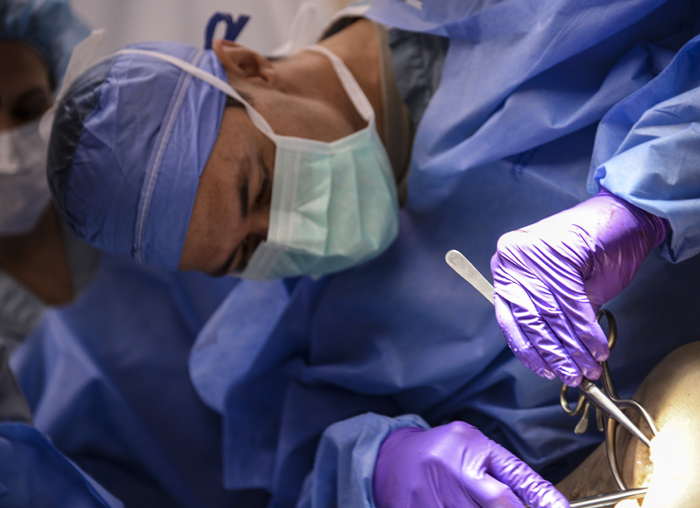USAMRMC Trauma Research Presented at Webinar Series

Col. Todd Rasmussen cleared his throat and carefully addressed his audience.
"The work we do here at Fort Detrick," he said, staring into a camera lens in a nearly empty conference room, "it's not only a form of national security, but it's also a form of homeland security."
His audience, the more than two dozen people stationed on the other side of the aforementioned lens and scattered across more than 14 different sites around the country, nodded their heads in agreement.
For Rasmussen, the director of the U.S. Army Medical Research and Materiel Command's Combat Casualty Care Research Program, it was his third such time taking part in the ongoing webinar series supported by the American Association for the Surgery of Trauma. Designed to educate surgeons across the country about new and specific developments within the field, the AAST is noted for providing in-depth and continuing education efforts for medical professionals.
"It's an honor to present in a forum like this one," said Rasmussen of the webinar, which took place on March 26, 2015. "This information we have, it's important information and it's an honor to share."
Rasmussen's half-hour presentation, entitled "Strategic Pause and Survey of Federally Funded Trauma Research in the United States," focused specifically on efforts to address cases of battlefield trauma sustained by the military warfighter. Currently, the DOD earmarks $300 million each year for trauma research, a pool from which Rasmussen and his team must then assign to various promising products, therapies and clinical trials for the ultimate benefit of the military Warfighter.
Specific benefits resulting from this type of need-driven medical research are legion, and include, in the case of military personnel, a 50 percent decrease in the overall fatality rate among service members injured in Afghanistan between 2005 and 2013. A chief reason for this accomplishment is the 2006 establishment of the Joint Trauma System, a codified list of clinical practice guidelines created to provide evidence-based best-practice recommendations for military trauma care.
The civilian health care system also benefits from this type of research, most notably with regard to mass casualty events such as terrorist attacks or mass shootings. As civilian health care workers continue to adopt techniques learned by their military counterparts on the battlefield, they also become better equipped to handle dynamic incidents that produce large waves of casualties and trauma.
"Other than the DOD," said Rasmussen to his virtual audience in closing, "there is no other federal entity that funds trauma research to such a significant degree."














